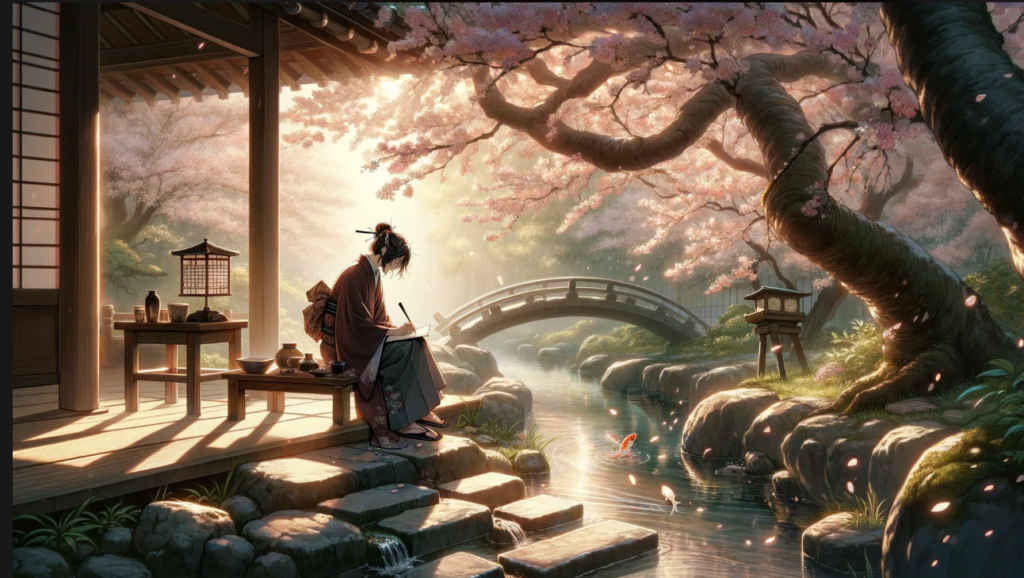
Lesson 41 Haiku (Japanese Poetry)
Topic Question: How is Japanese poetry, such as haiku, unique?
No. 1: Introduction– First, try answering the question yourself.
The instructor will provide advice on vocabulary, grammar, and expression corrections.
Sample Answer – Let’s read aloud. Instructor will check your pronunciation and accent.
Japanese poetry, particularly haiku, stands unique in the world of literature due to its brevity, structure, and depth. A traditional haiku consists of just three lines with a 5-7-5 syllable pattern, making it one of the shortest forms of poetry. Despite its concise form, a haiku often encapsulates the essence of a moment, particularly the beauty or subtlety of nature, and can evoke deep emotions and reflections. The use of kigo (seasonal words) and the cutting word, kireji, which provides a form of punctuation that enhances the poem’s emotional power, are also distinctive features. This poetic form values simplicity, natural beauty, and the expression of the impermanent nature of life, capturing fleeting moments with profound clarity and resonance.
No. 2: Vocabulary Building- 5 Words to Learn and Their Meanings
Pronounce the Words Correctly (Pronunciation Training) + Make Sentences Using the Words Instantly
- Brevity (簡潔, kanketsu): Shortness of time or duration; briefness.
“The brevity of haiku poetry is what often challenges and fascinates poets and readers alike.”
- Essence (本質, honshitsu): The intrinsic nature or indispensable quality of something, especially something abstract, that determines its character.
“A haiku captures the essence of a moment in nature with precision and depth.”
- Kigo (季語): A word or phrase associated with a particular season, used in Japanese poetry.
“Incorporating a kigo is essential in haiku to evoke the season and deepen the poem’s atmosphere.”
- Kireji (切れ字): A ‘cutting word’ used in haiku and other forms of Japanese poetry as a form of punctuation that adds an emotional or rhetorical pause.
“The use of kireji in haiku creates a pause, giving the poem structure and enhancing its emotional impact.”
- Impermanent (無常, mujō): Not lasting forever; temporary.
“Haiku often reflects on the impermanent nature of life, capturing fleeting moments with poignant imagery.”
No. 3: Key Idiom and Example Sentences
“Less is more” – This phrase suggests that a minimalist approach can be more effective than something more elaborate.
“In the world of haiku, ‘less is more’ reigns supreme; a few well-chosen words convey complex emotions and scenes.”
“The simplicity and brevity of haiku demonstrate that ‘less is more,’ inviting readers to fill the gaps with their imagination.”
No. 4: Discussion and Exchange of Opinions on the Sample Answer
Instructor: What aspects of haiku do you find most appealing or challenging? How does haiku’s emphasis on nature and the present moment resonate with you?
Student: [Opinions of students]
No. 5: Free Discussion on the Topic
Let’s discuss the influence of haiku on global poetry and how it has been adapted or adopted in other cultures. Consider the challenges of translating haiku into other languages while maintaining its essence and form. How have modern poets innovated within the traditional structure of haiku to reflect contemporary themes or personal experiences? Additionally, explore how the principles of haiku can be applied to other forms of writing or artistic expression. What lessons can we learn from haiku’s focus on simplicity, nature, and the impermanence of life?







